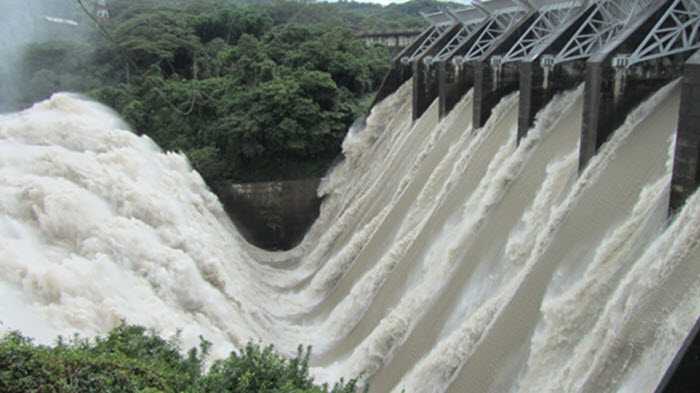The introduction of natural gas and incorporation of non-conventional renewable energies has transformed Panama’s energy matrix, previously dependent on hydropower, and diesel and bunker-fueled generation.
The reference scenario of state power company Etesa’s national interconnected system expansion plan (PESIN) forecasts a drop in the contribution from hydroelectric generation and the almost total displacement of power production from diesel and bunker plants (see infograph below).
Of the 2,394MW to be installed in this PESIN case, 18% corresponds to hydro, compared with 65% from thermo (LNG) and 17% from wind and solar.
In August, installed capacity totaled 3,741MW, of which 48% was hydro, 30% diesel/bunker, 10% gas, 7% wind and 5% solar, according to public services regulator Asep.
Etesa’s roadmap highlights that “being a technology [hydro] with so many years of development, large technological changes are not envisioned in the future to allow for the sustainable operation of projects that cannot be developed today.”
The outlook adds that growing opposition from community groups, indigenous peoples and farmers is significantly limiting options for new hydroelectric developments.

PROJECT PIPELINE
Asep information shows that as of end-September, the number of hydropower generation concessions for projects in development totaled 14 for a combined 413MW, with some in final design, others subject to pending addendums and a number whose construction is suspended.
Empresa de Generación Eléctrica’s (Egesa) 224MW Bocas del Toro project – also known as Changuinola II or Chan II – is the largest of the concessions granted, followed by Hidro Burica’s 63MW Burica project and Electron Investment’s 32.6MW Pando project.
In the case of Changuinola, Egesa has focused efforts on the socio-environmental front, in particular community outreach (pictured), as well as engagement with other stakeholders, such as the environment and agriculture development ministries, and local authorities.

The regulator previously approved a request from the company to extend the start of construction to January 15, 2022 and push back completion and operations startup to February 15, 2027.
Earlier this year, the national assembly’s budget committee approved additional funds to help Egesa advance the project.
Another 14 hydro projects for a combined 103MW are in the process of securing a concession from Asep, the largest of which is Mifta 52’s planned 39.1MW Cerro Gordo plant. The other 13 projects range from 0.90 to 9.94MW.

